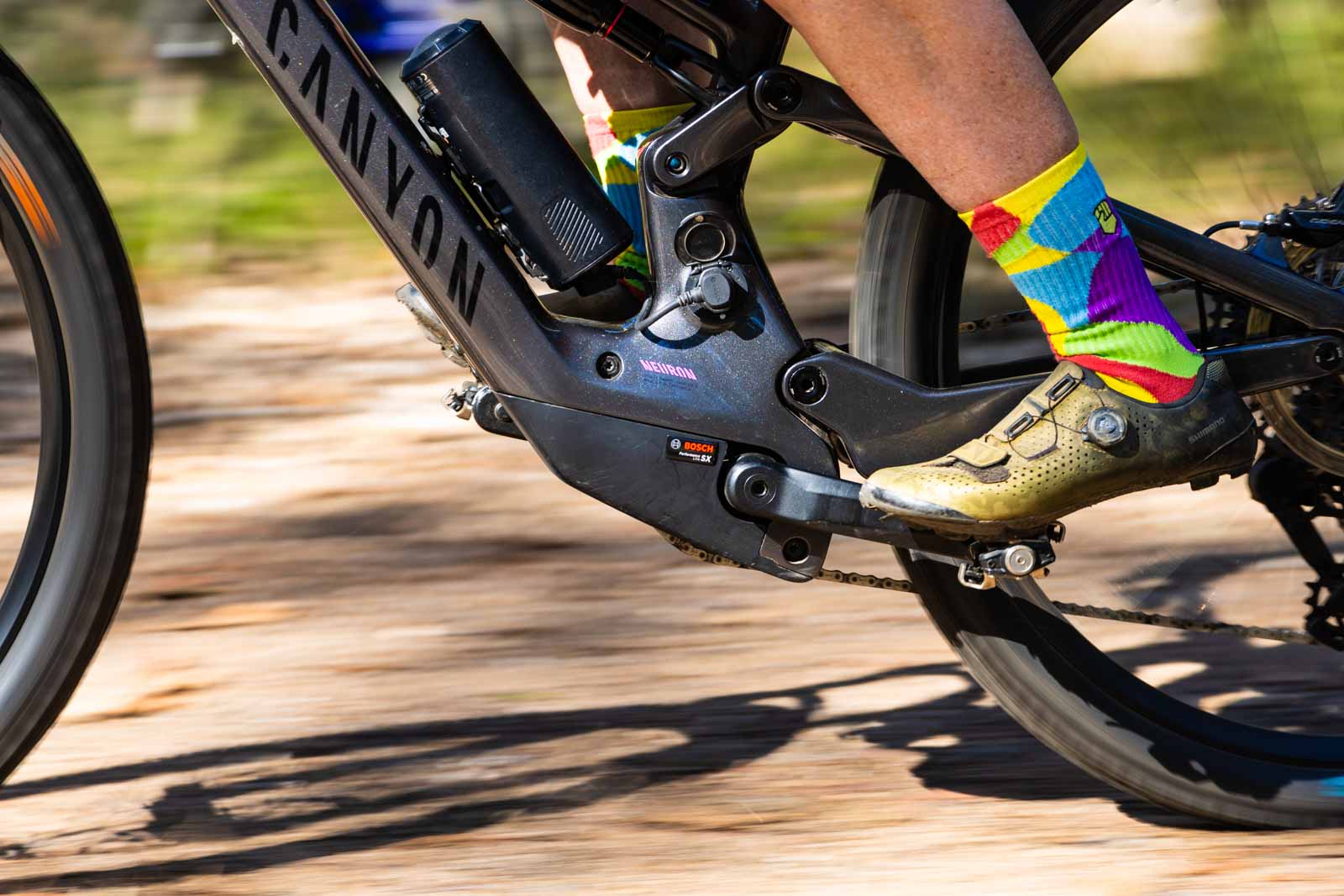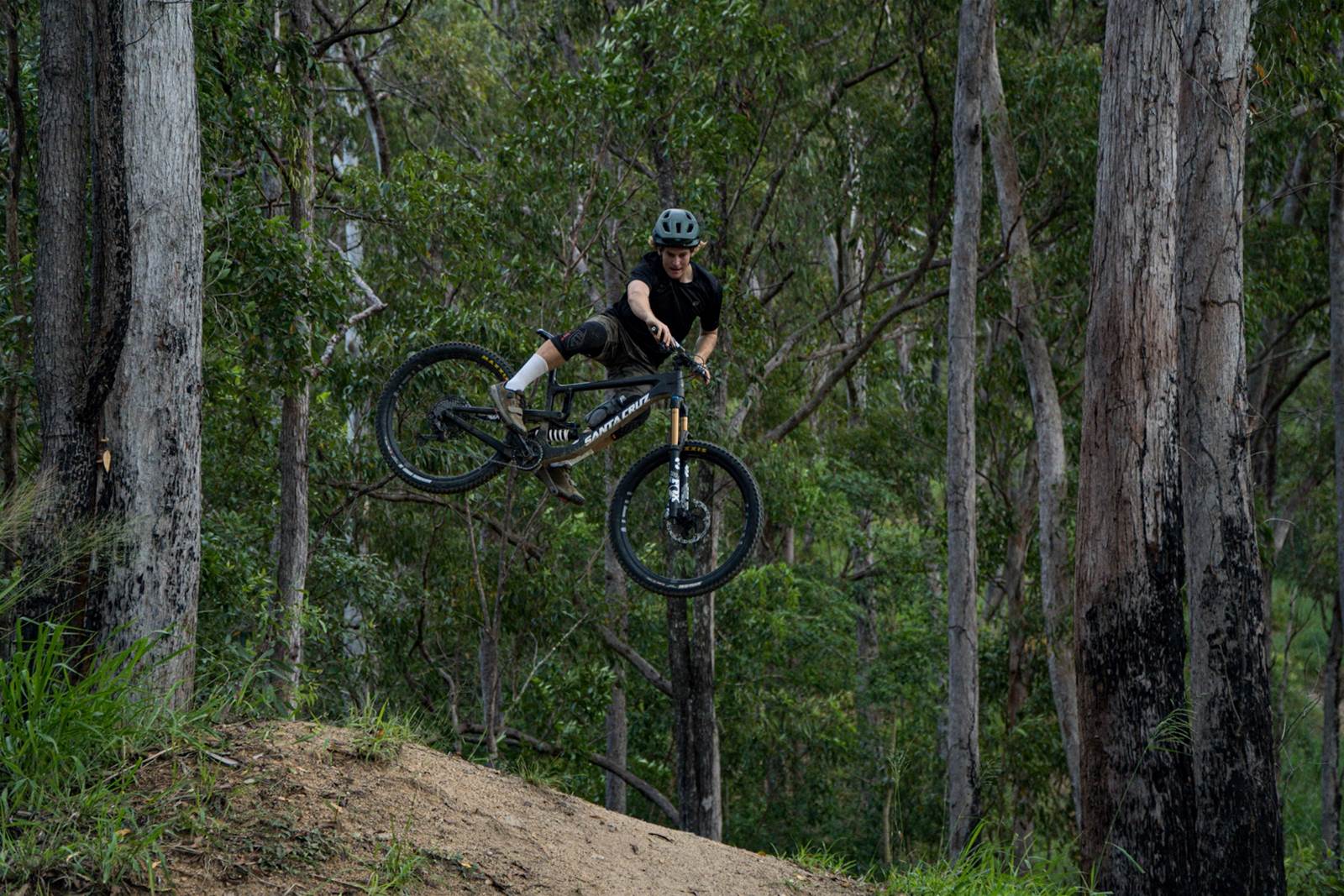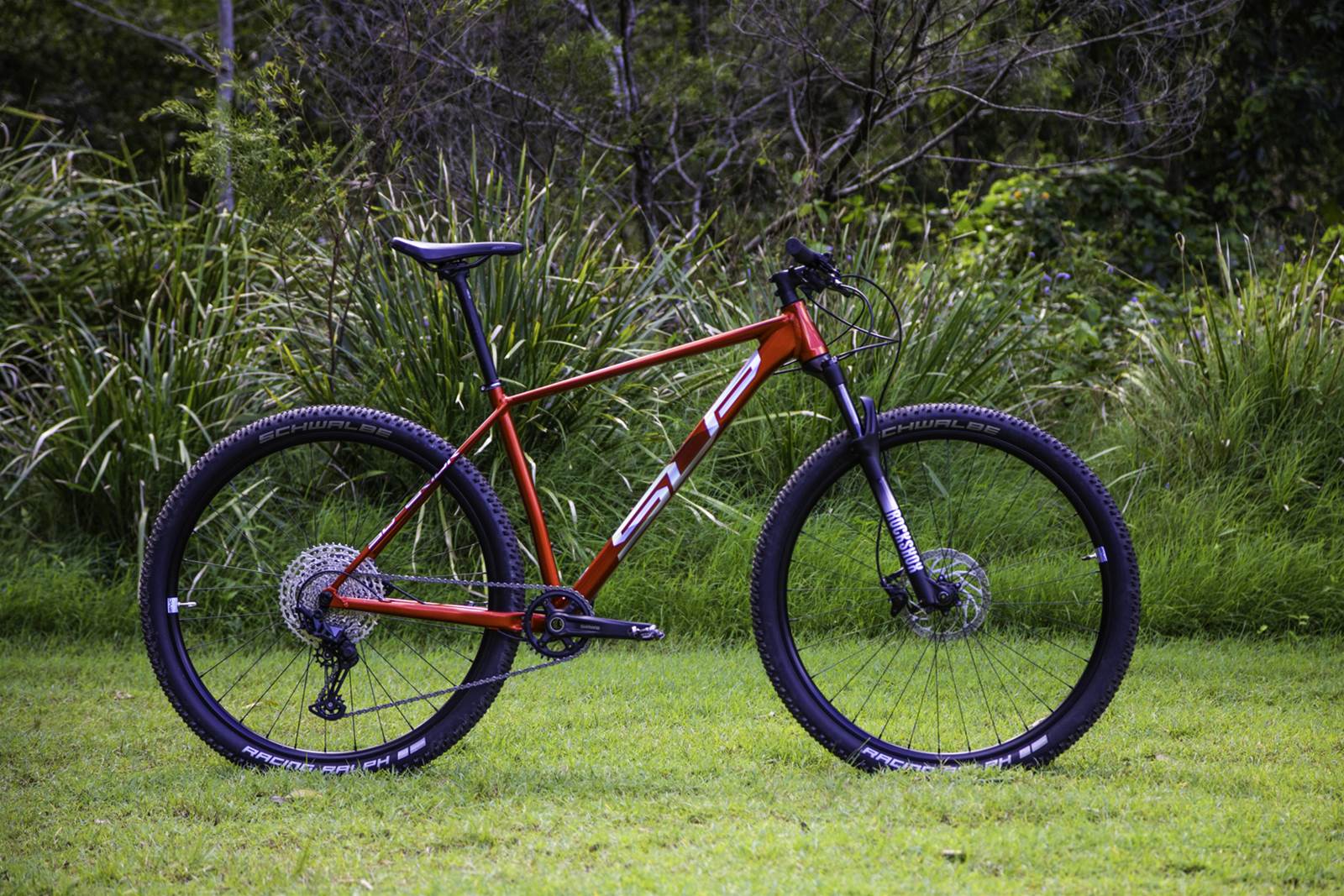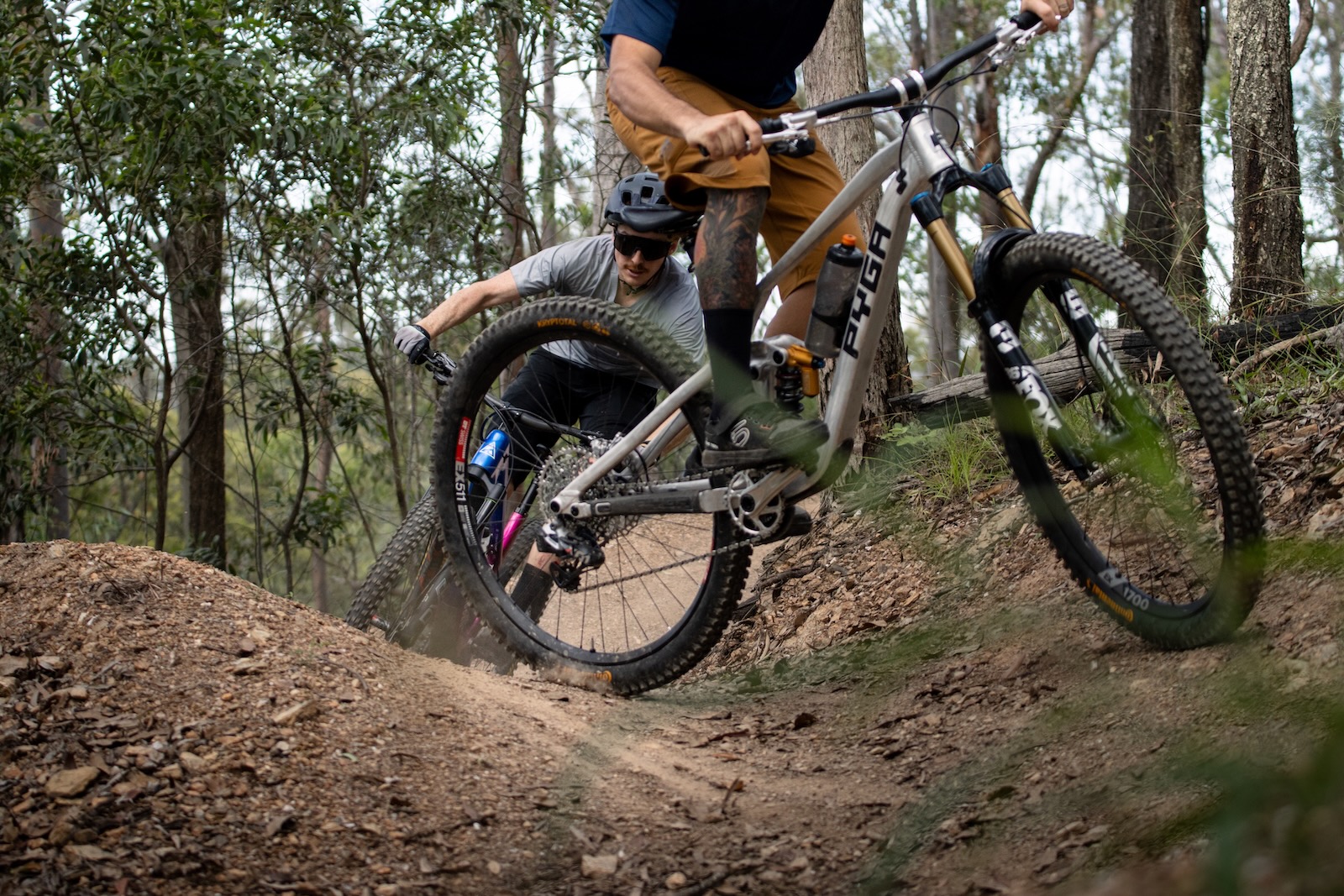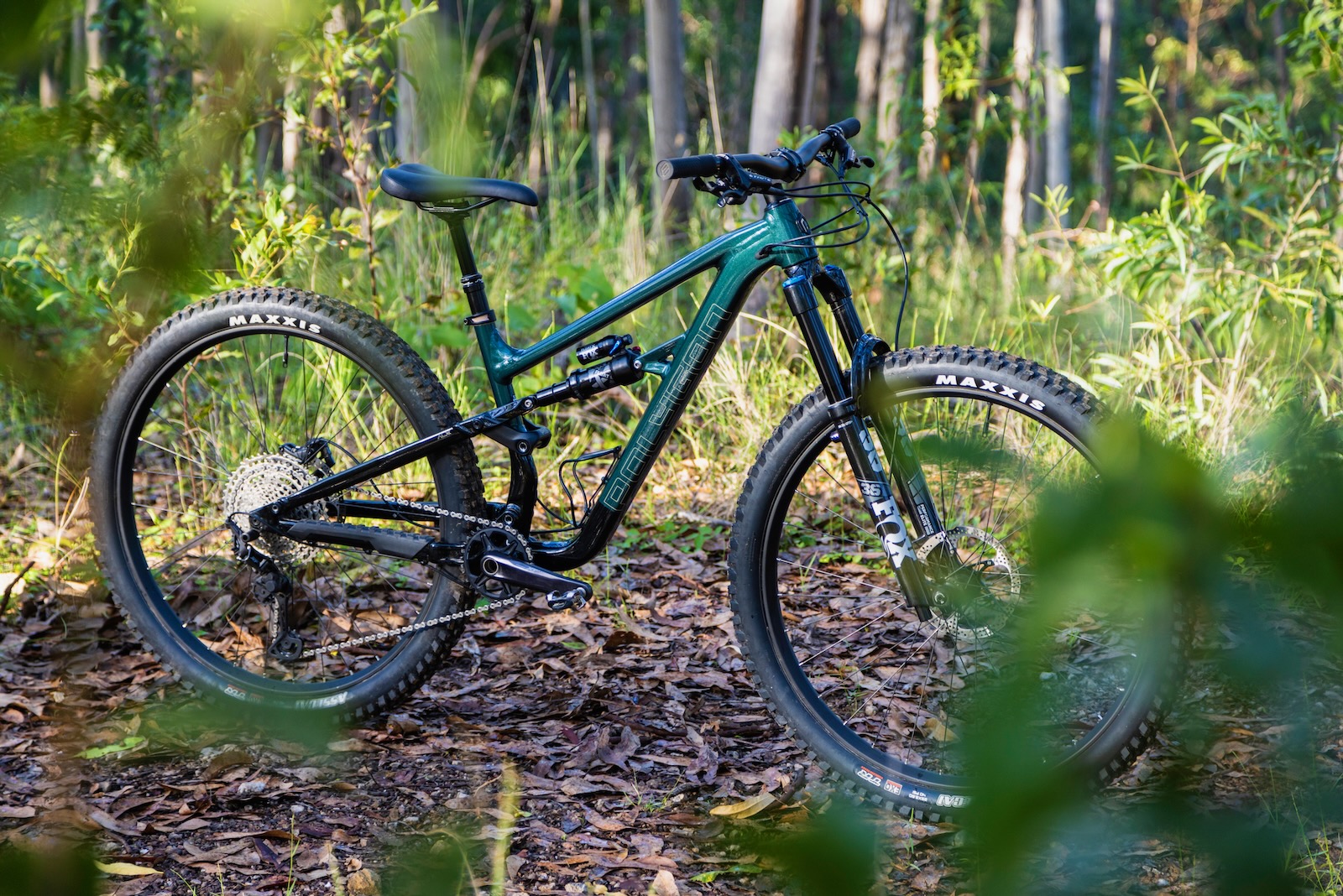TESTED: 2022 Pivot Firebird
The all-new Pivot Firebird is all about going fast on enduro trails. So we put it to task.
Pivot’s position in the world of mountain bikes is at the top of the pyramid. Make no mistake, they are a boutique brand. A number of things go hand in hand with this. Firstly, you tend to get frame construction that’s second to none. You also get suspension technology that carries on through different models and frame iterations. And as such, you won’t often see ground up redesigns. The engineers invest early in their design concepts, and refine them from there.
A pessimist might say that boutique brands are too slow to develop and change. But the reality is they have often developed and executed a very good product, and made ongoing refinements to keep it at the top of the tree. Pivot’s DW-Link suspension is an ideal example of a class-leading system that has been refined over time. Their range of bikes from the Mach 4 SL, through to the Trail 429, Switchblade, Mach 6, Firebird, Shuttle and of course the Phoenix show they have every segment of the full-suspension world covered. They even have two bikes without pivots on them, for the hardtail and cyclocross/gravel crowds! You should buy Dave Heaven from Pivot Australia a beer one time and ask him about how the Pivot Les hardtail came to being. It’s a good story.

This isn’t a review about hardtails, it’s a review of the new Pivot Firebird that was released in August. The Firebird is the big-mountain, hard charging enduro bike in Pivot’s line up. It has been refined on the Enduro World Series (EWS) circuit, with direct input from riders like Ed Masters, Bernard Kerr, Morgane Charre and others. The latest Firebird has been honed to let these riders push themselves and their bikes to the very limit, on terrain that continues to resemble a World Cup Downhill track.
“Everything we did, we did for speed,” said Chris Cocalis, founder and CEO of Pivot. “With developmental input from our Pivot Factory Racing team EWS riders, we built a faster Firebird. We bumped the travel up, increased reach across all sizes, gave it a slacker head angle, steepened the seat angle, incorporated size specific chain stays, made it stiff where it needs to be, and kept the weight down and the climbing manners sharp. This bike is designed to go fast, push new limits and win races.”

The Firebird keeps 29” wheels, and uses Pivot’s Hollow Core carbon construction with ride tuned carbon layups scaling stiffness and keeping weight to a minimum for each size.
As part of Pivot’s overhaul of their line-up, the Firebird has gained a vertical shock position, moving from the horizontal positioning of the previous model. This dramatically opens up the main triangle for bottle mounts, and brings the centre of gravity a little lower as well. To that end, Pivot have sunk the trunnion mount of the shock into the down tube, which itself projects forward to keep the main triangle open and allow oodles of standover height across all sizes. There’s some hefty rubber on the front side of the down tube as a roost guard. Pivot have also got their Tool Dock mount on the underside of the top tube, meaning pack free rides without having to go short on spares.
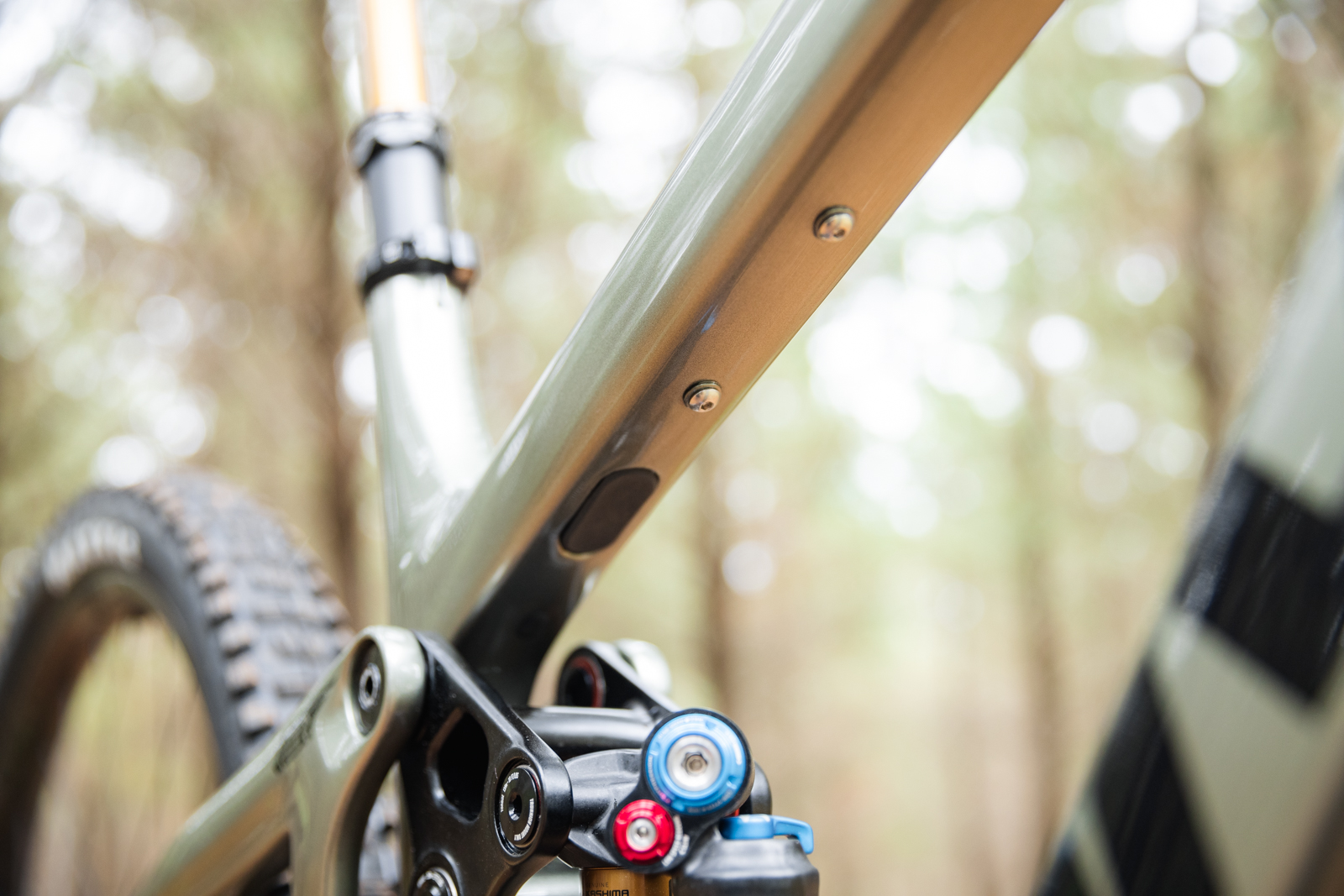
The DW-link has pride of place, as it should. This is one of the best performing suspension systems I have ridden. It climbs so well for the 165mm of travel on offer, even with the very enduro-centric suspension performance of the Fox Float X2.
The geometry has had an update, with the front end slackening by a degree to a 64 degree head angle. This is paired with a 44mm offset fork. The seat tube is 77.0 degrees effective (Measured based on an actual seat height rather than where the top tube and seat tube centre lines intersect giving some wacky virtual figures we often see on charts), which measures as an actual 72 degrees. With 438mm chain stays and a long 1267mm wheel base on the large, Pivot are dealing a hand that walks the line between being steady at high speed while still offering the pop’n’launch ability an enduro racer will want.
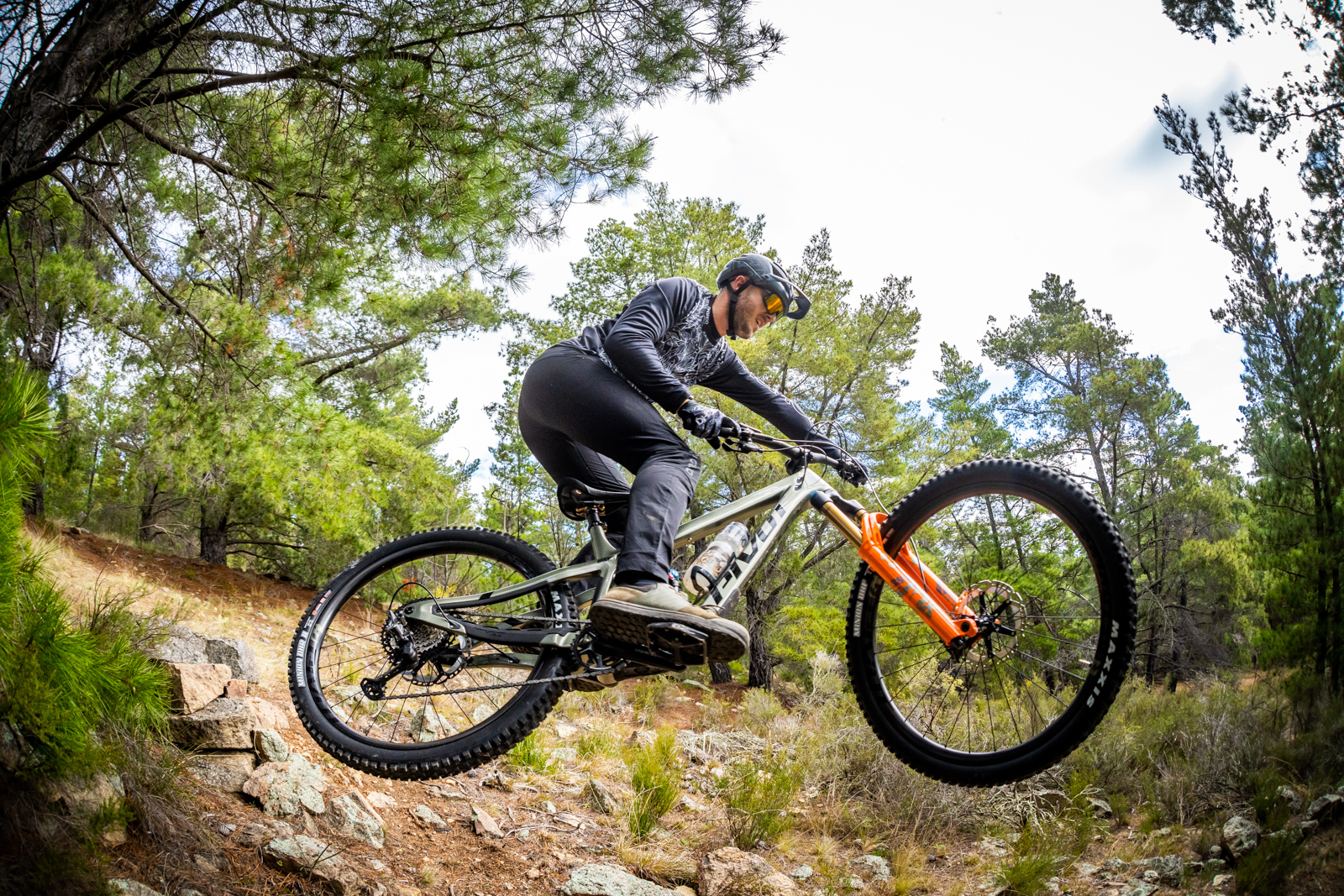
Like on the Trail 429 that Will Shaw tested earlier this year, there is a little flip chip at the top of the chain stay swing arm. The two positions offer 0.6 degree head angle difference and about 6mm bottom bracket height adjustment. I rode the bike in the low setting first but raised the bottom bracket from 350mm to 356mm thus steepening the head angle to 64.6 degrees. My local climbs are packed full of features and are quite technical and despite the 170mm cranks and minimal movement from the DW link, my flat pedals were still getting snagged on occasion and the 6mm increase in the high position did help reduce this.
We have the Pro XT/XTR Air/Carbon wheel model on test, with Fox Factory suspension and dropper, Reynolds Blacklabel 34mm carbon wheels and a Shimano XT/XTR group set mix. There are three levels of build, Pro, Team and Race in either SRAM or Shimano and Carbon wheel, Coil, Air and Fox Live Valve upgrade options available for the Pro and Team build levels. There really is a build for every style and budget starting at $9499 and going all the way up to $19999. Drop in to your Pivot dealer for details on the complete range.
Essential details
Bike: Pivot Firebird
Wheel size: 29″
Suspension travel: 170/165mm front and rear
Group set: Shimano XT/XTR 12-speed mix
Intended use: Enduro racing, bike park, big mountain riding
Weight as tested: 14.875kg (large)
RRP: $9499 – $19999
Initial Impressions
Following the new vertical shock layout (yes Pivot have done it a few iterations ago) the new Firebird now looks like the Mach 6, Switchblade, Trail 429, and Mach 4 SL with lower standover height, a visually more compact frame, with a lower and more central weight distribution. More importantly, it has room for a bottle and tools via Pivot’s nifty Tool Dock under the top tube and on the downtube which is recessed slightly to give more clearance for the stowed items. Pivot have partnered with Topeak and Back Country Research to offer riders a range of tools, inflation and ‘Enduro Portage’ for your new Pivot.
Personally I love the change to no swoopy tubes, an easily accessible shock, quality linkages and hardware, and no silly little spots water and dirt can sit and get lodged. These are all massive wins for the new Firebird. It’s a good looking rig with the usual quality finish from Pivot with loads of finer details drawn from their athletes and lessons learnt. The new Firebird is a blend of the Phoenix DH bike and shorter travel Pivots featuring the new vertical suspension layout.
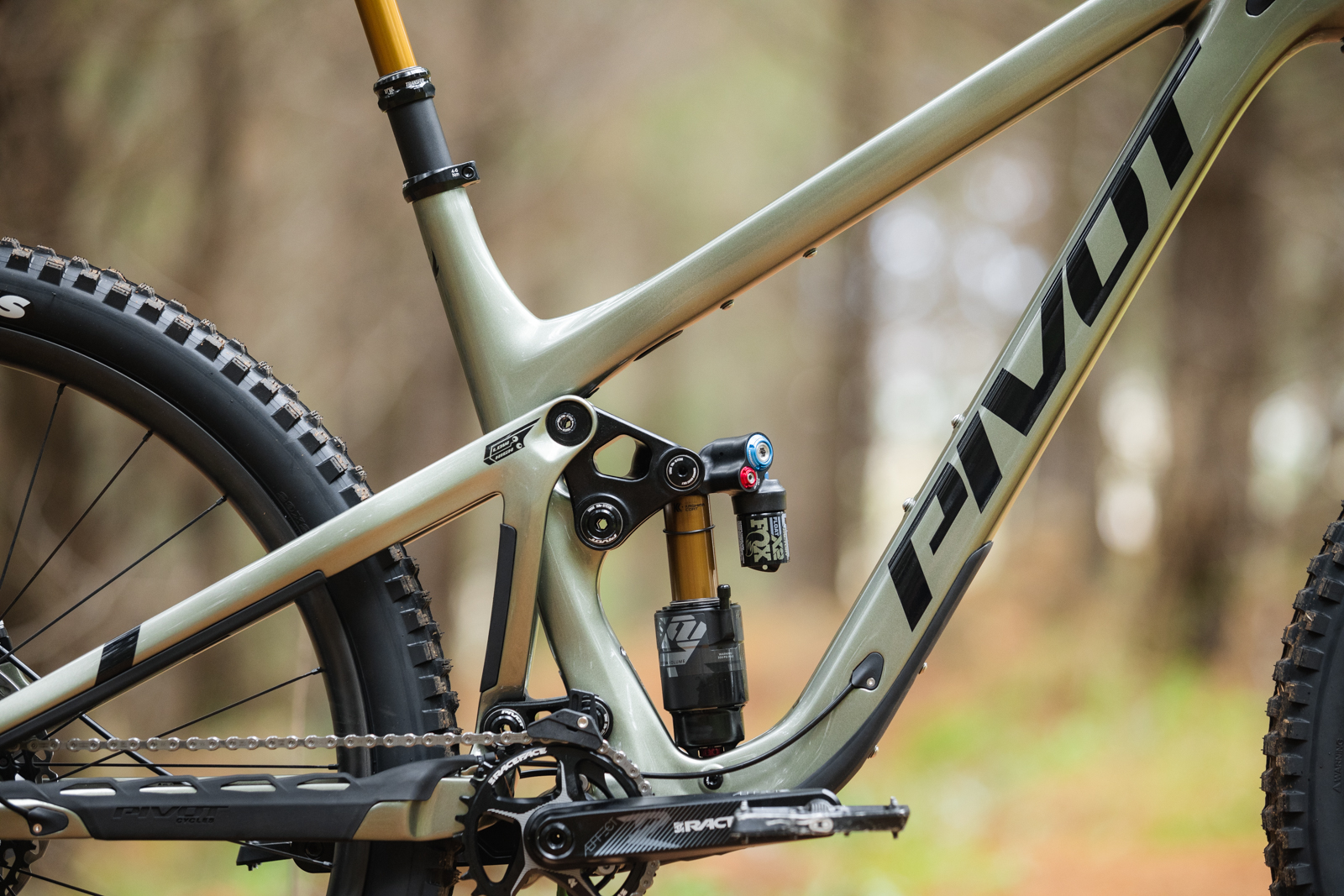
Cable management ports can be setup Euro or Moto (right hand front brake) and lock the cables down tight to stop rattling and movement in the frame. Frame protection is stepped up yet again with high quality chain and sea tstay protection and a very substantial down tube protector. A move from 30.9mm seat tube up to 31.6mm means you have a more durable dropper post and more options if you want to upgrade. Details count, and there is a neat little drain hole below the lower shock mount that lets water escape from what would normally become a pool of slop on a wet ride or in the bike wash bay, Pivot haven’t missed a thing.
Pivot are offering the Firebird in one no compromise carbon frame featuring Ride Tuning; the idea of variable tube sizes and shapes per frame size. With four frame sizes offered, each frame is unique and has varying chain stay lengths for each frame size ensuring riders of different heights get the right fit and handling characteristics.
The low standover and shorter seat tubes enable riders to choose frame size based on reach and type of riding rather than “yeah I usually ride a large” which Is what I did and advise you don’t so read on. As a not really that tall rider at 178cm I have always been between a medium and a large, and I often opt for a large as I like a longer and more stable bike. I am most comfortable on a bike with 465mm – 475mm Reach. I only saw the geometry chart after delivery, and a size medium measures in at 473mm reach which is what I should have chosen and what figure a modern medium should fall around. The size large comes in at 493mm and while long, with the short seat tube and low stand over I was still able to run the 175mm dropper with room to spare. What I mean by all this is riders with long legs or torsos have the ability to move across sizes, longer bike = more stable, shorter bike = more maneuverable. The moral of story; if you’re this big and ride a size large, look at the chart and chat to your dealer first!
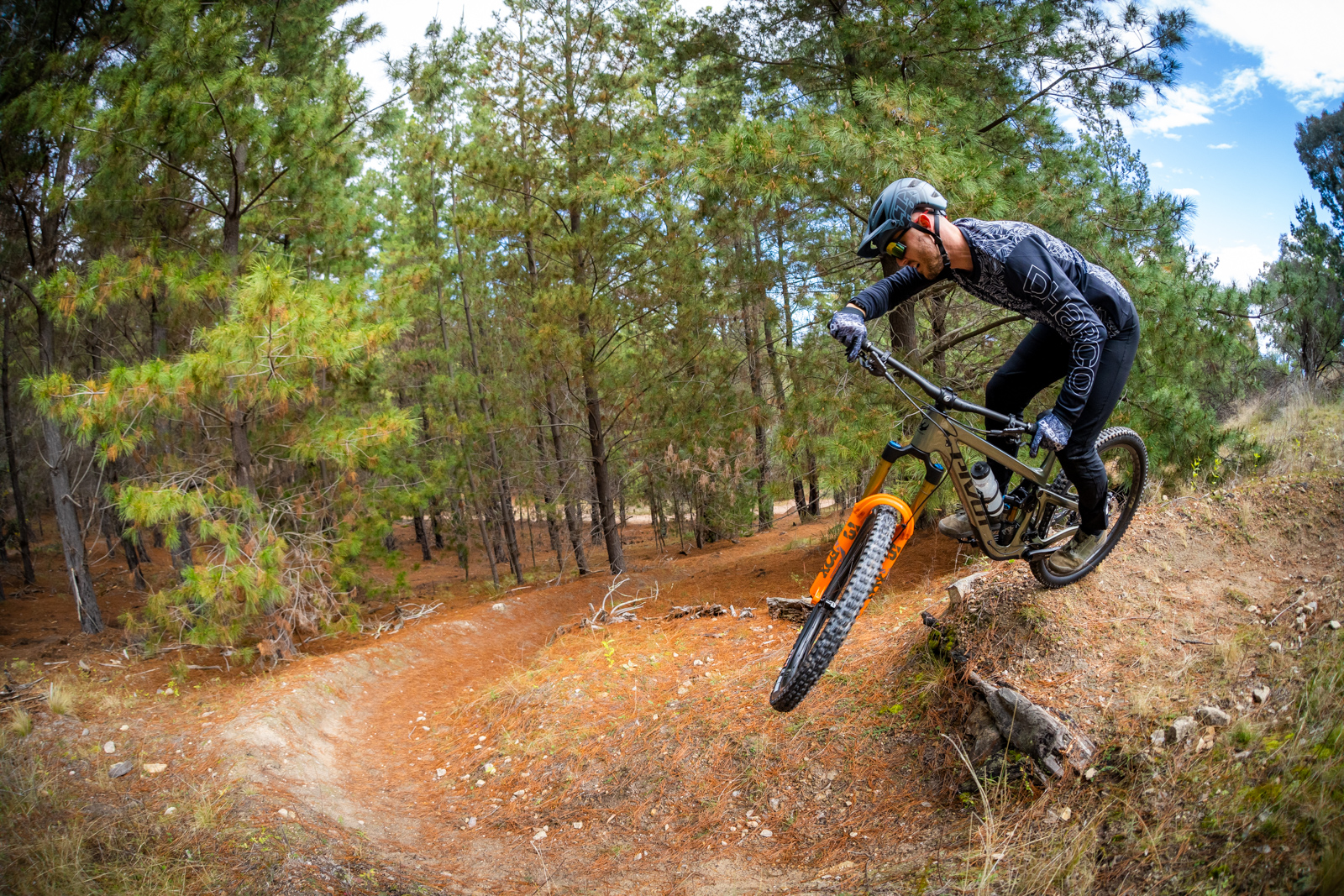
The increased length and one degree slacker head tube and considerably steeper seat tube angle puts the rider in a very central, balanced position ready to attack the rowdiest trails and knock off the longest climbs. Pivot knew based on feedback from the team that they needed a bike up to the rigors of downhill that can still climb like a DW-Link equipped trail bike. The Firebird’s kinematics are a more aggressive rearward axle path while retaining the efficient pedalling performance I have grown accustomed to.
TESTED: Pivot Switchblade
TESTED: Pivot Trail 429
On The Trail:
Unlike most 170mm/165mm hard hitting 29ers, the Firebird pedals very nicely, even uphill and even with the plush Fox Factory X2 and burly Maxxis rubber. The Reynolds Blacklabel Enduro Wide Trail carbon wheel set roll on Industry 9 hubs and spin up beautifully on the trail, out of corners and more importantly feel solid in the chop and direction changes.
The initial rearward axle path, revised suspension kinematics and one degree slacker head angle allow the bike to roll over terrain with ease and feedback. I spent time riding both flats and clips and was surprised how confidence inspiring the bike is. The new Firebird remains composed as you would expect from a bike with 170mm/165mm travel but is still easily maneuvered from the central riding position. The rear suspension feels bottomless and when paired with the Fox 38 there isn’t much that unsettles the bike, certainly on my local test tracks. The Firebird is clearly a bike designed to be pushed to the top levels of EWS racing, in the hands of a master bike rider.

At 14.85kgs its just under that sweet spot or limit so to speak, it feels lighter to ride given its size, brawn and appearance and I was surprised to see the high 14s pop up on the scale. Weight isn’t something I have looked at or dwelled on for the last few years and while this is already lighter than the majority of hard hitting EWS race bikes, it feels light, lively and yet planted and forgiving, a refreshing blend.
Photographer: Nick Waygood
Tester: Ryan Walsch
Riding Experience: A couple of decades behind bars and at workstands for many two wheeled pursuits.
Generally Rides: Happy on anything with two wheels but quite partial to High pivots and my Forbidden Druid
Height: 178cm
Weight: 73kg
Bike Test Track: Darkside of Stromlo, Tuggeranong Pines, Majura madness and Canberra’s finest loam.
The Firebird excels at speed, rough and technical terrain where unsighted lines and risk are required to win, its incredibly forgiving and yet climbs like a Pivot with less travel. This is exactly what a true enduro bike needs to do, helping riders stay as fresh as possible on the liaison stages to let them unleash when against the clock.
Our Take:
Depending on the terrain you ride, this EWS race machine may turn your local tech into a less than thrilling section. If you want to go big and push hard this is a great choice, if you want a bit more trail feedback and thrill maybe a Trail 429 or Switchblade with their recent updates and similar build philosophy may be better suited to your jam.
The build quality and durability of our Firebird was exceptional and performed flawlessly throughout the test. Everything was greased, tight and setup nicely out of the box and despite many rim dings and tyre plugs the Reynolds wheel set remains straight and damage free. I would love to see a slightly burlier tyre than the Maxxis EXO+ casing tyres but I understand the weight penalty may not be for everyone.
Price: $14999
From: Pivot Cycles Australia

